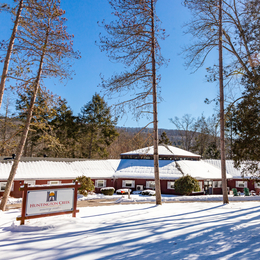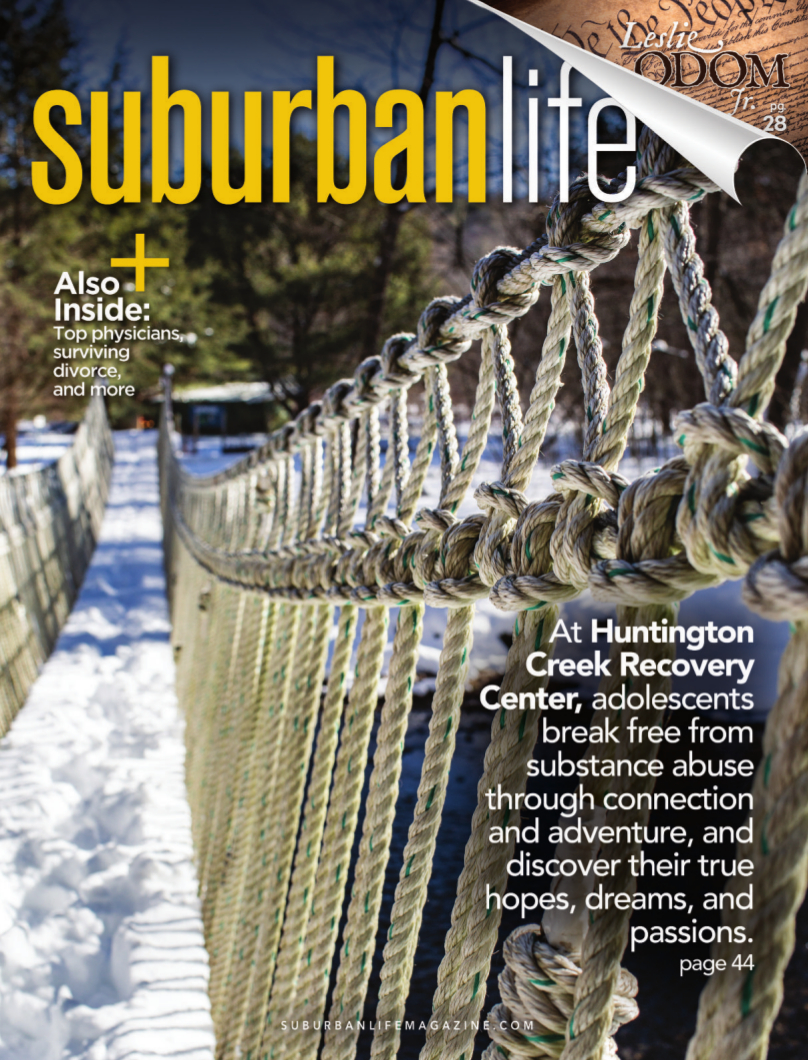
The Right Choice
At Huntington Creek Recovery Center, adolescents break free from substance abuse through connection and adventure, and discover their true hopes, dreams, and passions.
Kathy Smith* noticed a shift in her son’s behavior during his mid-teens. Outgoing and athletic, Travis* had always been a happy kid and rarely caused problems. Suddenly, he stopped going to the gym and began hanging out with a suspect group of peers.
“Every time my mom would see me when I came home, she would say, ‘I smell alcohol on your breath’ or, ‘You smell like weed,’” Travis recalls. “At the time, I thought that this is just what teens do, like in movies I watched. But it’s not what you are supposed to do.”
The final straw came when Travis was apprehended by police and compelled to take a sobriety test. “His blood-alcohol level was so high, I knew then for sure he had a problem,” says Kathy.
The Other Health Crisis
Addiction doesn’t discriminate. Male or female, rich or poor, young or old—addiction can strike anyone. Substance use disorder often begins in adolescence and, without proper treatment, can spiral into a lifelong struggle. Recent research on the subject of adolescent substance use reveals some alarming trends.
The Pennsylvania Youth Survey (PAYS) is conducted every other year to gather information about youth in grades six, eight, 10, and 12 regarding their knowledge, attitudes, and behaviors towards alcohol, tobacco, and other drug use. According to the data, most youth who had used alcohol or marijuana stated that their first use was between 10th and 12th grade. Over-the-counter and prescription pain relievers were used with the purpose of getting high by 3.4 percent of students. Prescription pain relievers in particular can put adolescents at risk for dependency and addiction.
From 2017 to 2019, the percentage of 10th graders who reported drinking five or more alcoholic beverages in a row was 9.6 percent, according to the 2020 Monitoring the Future survey, a national study funded by the National Institute on Drug Abuse. For 12th graders it was 16.8 percent. In addition, 4.4 percent of 10th graders reported daily marijuana use, and almost 7 percent of 12th graders.
This data is corroborated by local treatment providers such as Patti Anne McAndrews, founder and program director of Adolescent & Young Adult Advocates in Bryn Mawr. She has observed a significant uptick in the number of adolescents who vape nicotine and marijuana since the beginning of the global health crisis last year. She is seeing some kids drinking heavily and hiding bottles as well. Since school schedules across the region have been hybrid or completely virtual for the past 11 months, much of this substance abuse is happening right under their parents’ roof.
“The parents have the kid at home and they think they aren’t smoking,” says Patti Anne. “Then we do a drug test in treatment and they are hot because they are using ‘pens’ at home. Kids can go online and look up dealers to deliver to their house. These parents are often sophisticated, but they have no idea this is happening.”
Sometimes, parents who think they are doing what’s best for their child are actually fueling their addiction and mental health issues. Not understanding how THC (the active chemical in cannabis) affects the adolescent brain, some parents support their son or daughter’s efforts to obtain a medical marijuana card to help them manage stress, anxiety, and depression. However, this can lead to dependence and even THC-induced psychosis, according to Patti Anne.
Lifesaving Treatment
In response to a growing need for adolescent substance abuse treatment combined with a disturbing reduction in teen programs and resources in the tristate area, Huntington Creek Recovery Center opened its 12-bed detox and residential program for boys ages 13 to 18 in the summer of 2019. Nestled on 40 acres of wooded land in the Pocono Mountains, Huntington Creek is an ideal place for reflection and healing. The grounds feature nature trails, fire pits, and a ropes course, perfect for outdoor groups and adventure therapy. The main residence features patient rooms encircling a large living space with a floor-to-ceiling fireplace, fostering a cozy, homelike feel. A tutor comes during the week for several hours to assist patients with their schoolwork and ensure they do not fall behind on their studies. Patients spend 28 days here with the option to extend their treatment stay up to three months.
“When we were driving up to Huntington Creek, I was scared,” says Travis Smith. “I didn’t know what to expect because I had never been to treatment before. How were the people going to be? But I got comfortable and the people were really nice to me.”
Therapists Lauren Williams and Silas Farrow run the teen program at Huntington Creek. Both are young but experienced in the adolescent treatment world, and passionate about what they do. They are also in long-term recovery themselves, which serves as a powerful tool for connecting with and gaining the trust of their patients. Because of the small census and the absence of teenage girls, patients are able to open up and be vulnerable with each other, and do the emotional work required to lay the foundation for lifelong recovery.
Especially in stressful, isolated times, when adolescents are cut off from friendships and normal socialization, the onsite activities at Huntington Creek promote healing. Ropes courses, field trips, pizza night, and community projects all help patients build communication and trust with each other, with their therapists, and with their families.
Families are involved in the treatment process from beginning to end, ensuring a safe and smooth transition when their loved one returns home. After treatment, Huntington Creek offers weekly updates and family support groups. Silas stays in touch with families post-discharge, both to celebrate the success of former patients and to be a lifeline if they need to return to treatment.
“The counselors were great,” says Kathy Smith, Travis’s mom. “You could just call them up and talk to them. Not only that, but they kept in contact afterwards. They also gave us a list of places to go in our area for aftercare. They recommended Kolbe Academy (a recovery high school in Bethlehem, Pennsylvania), where Travis is now. I’m really happy with how it all worked out.”
Hope and Recovery
Even within its first two years of existence, Huntington Creek success stories abound. In addition to Travis, Silas mentioned a recent call he received from another former patient.
“I had this client over a year ago,” he says. “Initially, he was very guarded and resistant. Over the course of several weeks, we built a bond, and the dynamics of our therapeutic relationship shifted. He confronted issues in treatment and gained insight into himself and what had been driving him crazy. He’s now a year sober, in college and ROTC, and plans to join the military.”
As for Travis, he recently celebrated a year clean and sober, and graduated in July from Kolbe Academy. He continues to take post-graduate courses at Kolbe and is participating in a job-shadowing program. His long-term goal is to open up his own gym.
“Everything is good right now,” says Kathy. “You’re still nervous. Travis grew up with same kids from kindergarten through 12th grade, so it’s hard to say he can’t see those kids. I know once in a while he sees them, but he’s been making the right choices. You have to want to make the right choices, and I hope he continues doing that.”
Huntington Creek Recovery Center
890 Bethel Hill Road
Shickshinny, PA 18655
(570) 216-5555
*Names have been changed to protect privacy
Photography by Nicole Karr
Published (and copyrighted) in Suburban Life magazine, February 2021.



